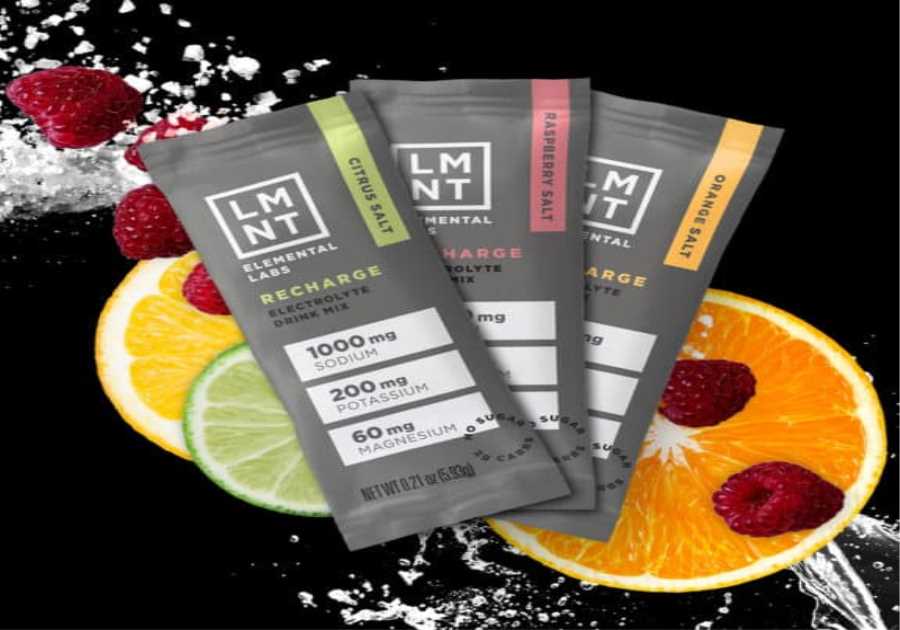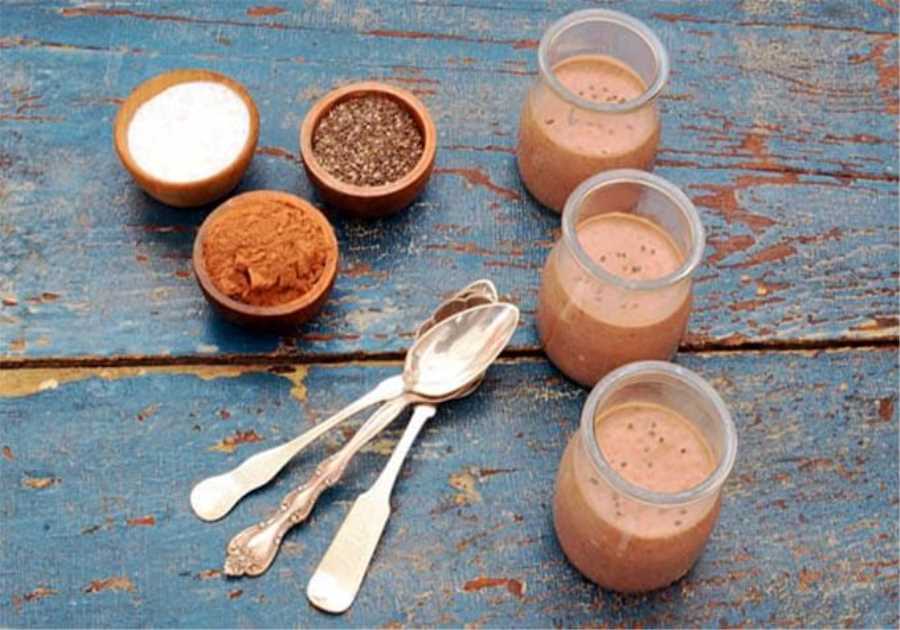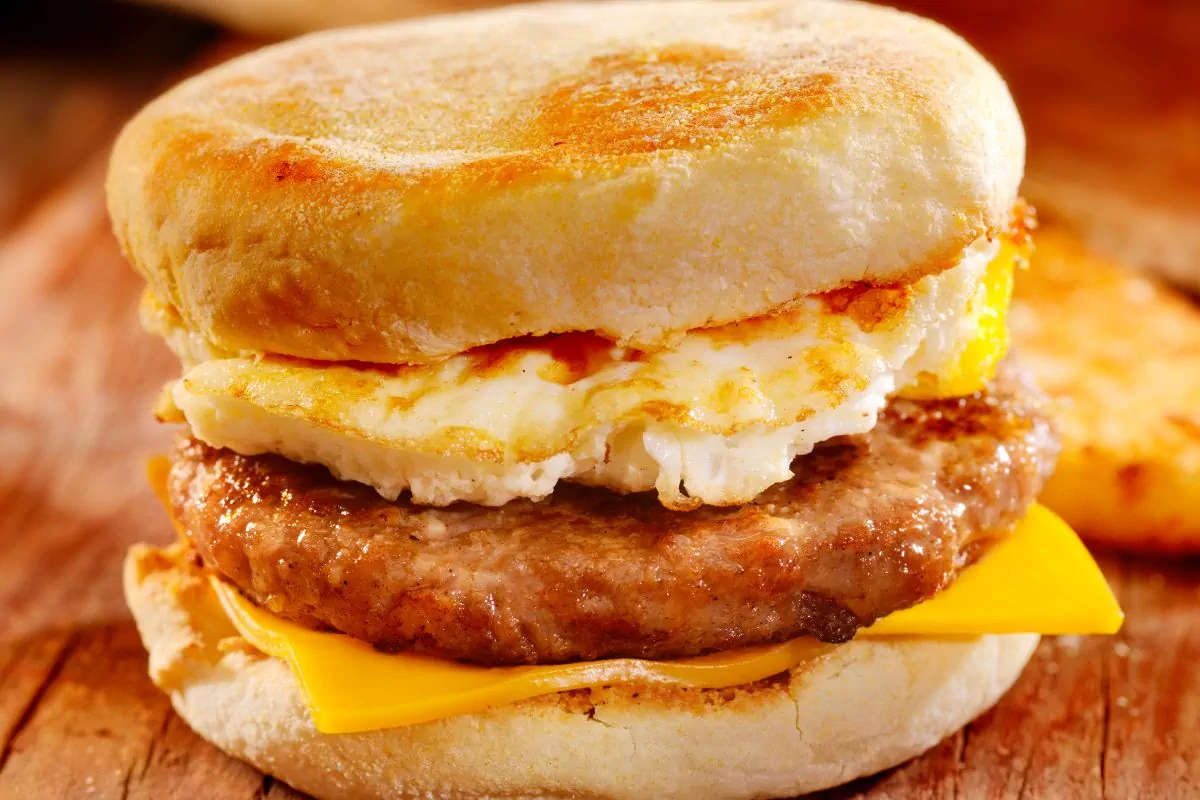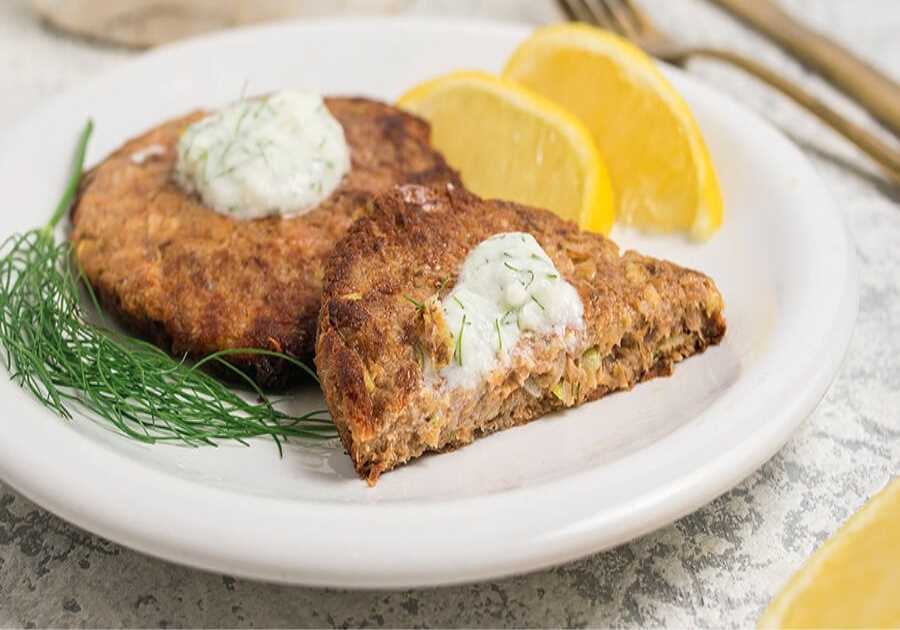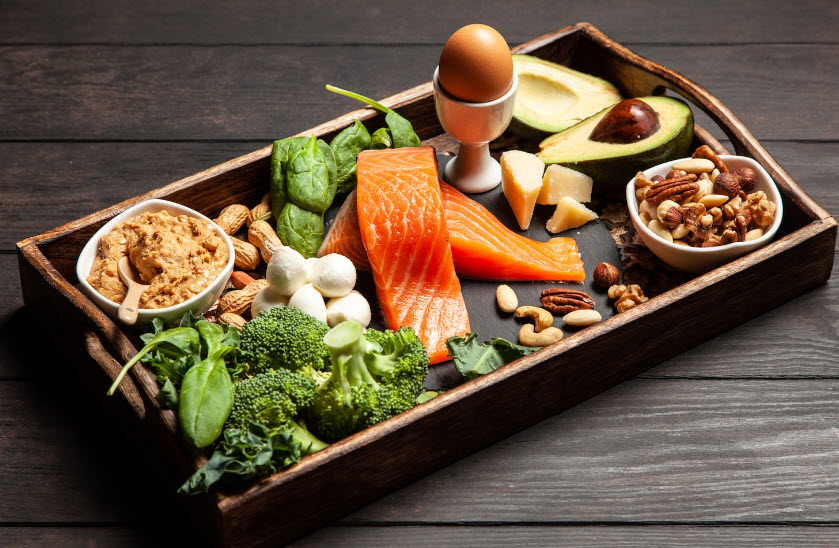
The Best Foods to Eat If You're on the Ketosis Diet For people with Diabetes
Maintaining healthy blood sugar levels can be a challenge when you’re managing diabetes. But adding the keto diet to your lifestyle may help regulate your sugar levels better and reduce any symptoms of diabetes.
The ketogenic, or ‘keto’ diet is a very low-carbohydrate eating plan designed to completely change your metabolism and put you into a state called ‘ketosis’. Here, the body uses fat for fuel instead of carbohydrates, reducing insulin production in the process.
This means that people with type 2 diabetes may be able to better maintain their blood sugar levels and experience fewer symptoms. Better still, it encourages weight loss, which can have an even bigger impact on managing their disease symptoms.
But of course, this isn’t any ordinary diet – switching from carbs to fat doesn't just happen overnight; so it's important to make sure you replace the carbs in your diet with nutrient-rich foods that are going to nourish your body while helping you attain ketosis faster.
Understanding which foods support keto goals is essential in maintaining a healthy body through this journey as well as giving you more energy as soon as possible.
In terms of macronutrients, food sources high in quality fats include avocados, olives, and nuts such as macadamia and almonds; organic grass-fed beef, fatty fish like salmon and canned tuna; egg yolks were chosen over whites due to the higher fat content; butter and lard are generally recommended over margarine; Greek yogurt offers greater nutrition than regular yogurt - Its probiotic qualities can also enhance digestion; fruity vegetables such as tomatoes (yep tomatoes) along with capsicum or bell peppers contain vitamins which have been linked to controlling glucose metabolism; dark leafy greens including kale and spinach supply key fiber for digestive health plus a range of vitamins for supporting immunity long term; legumes should be added too - sprouts may be mung beans are a great source of iron - whereas lentils boast plenty of protein and iron.
So eating these sources during your keto journey will provide much-needed nourishment while helping keep blood sugar levels stable throughout the day. But it's also important you add probiotics such as Kefir to make sure all food is digested correctly.
Adding a high-quality green superfood powder or fresh ground seeds like chia or flaxseed meal is also widely accepted by most diabetics who follow this program for improved glucose stabilization throughout their day.
Remember that too much exercising can place serious strain on both physical resources & mental well-being so moderating exercise intensity helps maintain balance long term and blood sugar stability. This means doing whatever works best physically including yoga or tai chi & always checking blood glucose prior to workout sessions. Allowing yourself small treats like dark chocolate minimizes feeling deprived during this period whilst allowing some flexibility within total calorie intake.
Dairy
When it comes to a ketosis diet for diabetics, dairy may not be your first choice. However, the good news is that it can be a good addition to your diet. It provides valuable nutrients that your body needs, and it can help you stay full for longer. Besides, it can also boost your insulin resistance, which is important for people with diabetes.
Dairy can be a great source of protein and calcium, two nutrients that are essential for maintaining a healthy body. Besides, it can also be a good source of fat. But, before you go guzzling it, be sure to read the nutrition labels on all your foods. If you are not a fan of dairy, you can find a number of great alternatives.
One way to make the most out of your dairy is to use low-fat products. These are sourced from healthy cows, which means they are able to give you plenty of nutrition without too much sugar. They are also low in natural milk sugar, making them a good option for those on a keto diet.
Eggs
If you're on the ketosis diet for diabetics, eggs may be an important part of your plan. They're low in carbs, rich in protein, and contain several vitamins and minerals. However, eating them can have some risks.
Eggs are also high in fat. This is good because it helps keep blood sugar levels stable. But it's not a good idea for everyone. Some people are allergic to eggs. It's best to consult with your doctor before trying this diet.
While eggs provide a good source of protein, it is possible to reach a state of ketosis without consuming them. The body does this through a process called gluconeogenesis. That means your body breaks down fat into ketones.
These ketones can help your body burn more fat. When your body enters a state of ketosis, your body produces less insulin. Therefore, it's easier to lose weight.
Eating eggs also keeps your blood sugar levels in check. They're a good source of antioxidants. And they also contain zinc, calcium, and vitamin E.
Mushrooms
Mushrooms are one of the best foods to eat if you're on a ketosis diet. Not only are they low in carbs, but they are also rich in vitamins and minerals. These nutrients help boost your immune system and protect your brain.
Mushrooms are a good source of dietary fiber. This soluble fiber helps support digestive health and reduces cholesterol. Fiber can also improve your gut microbiome. A healthy gut can help you absorb the nutrients from your food, which can help prevent diabetes and other illnesses.
Mushrooms are also rich in selenium. This mineral can help fight infections and help maintain the production of thyroid hormones. Selenium also has antioxidant properties, which can protect your cells from damage. Antioxidants are important because they combat oxidative stress. Oxidative stress can increase your risk of heart disease and certain cancers.
Beta-glucan is another soluble fiber that protects against disease. Beta-glucan prompts the immune system to produce natural killer cells. It also traps cholesterol, lowering the risk of high blood cholesterol.
Mediterranean diet
If you're looking for a diet that's not just for losing weight, but is also good for you, you should try a ketogenic diet. This low-carb, high-fat diet is believed to be helpful in preventing chronic diseases.
It may help you lose weight, lower your cholesterol, and even prevent diabetes. The ketogenic diet is a strict diet that counts the macronutrients you eat. You'll limit yourself to a variety of foods, including lean meats, whole grains, and healthy fats.
While you're on a ketogenic diet, you'll stop taking medications for blood sugar lowering and stop eating carbs. Some of the most common foods on a ketogenic diet include beef, dairy products, and red wine.
A Mediterranean diet, on the other hand, doesn't have any specific restrictions. Although you'll have to cut down on red meat, you'll be allowed to eat a variety of foods, including eggs and whole grains.
If you're on a ketogenic diet, however, you'll need to track your macronutrients and make sure you're getting enough protein. Similarly, if you're on a Mediterranean diet, you'll want to make sure you get plenty of omega-3 fatty acids. These nutrients can protect your cells from damage and help you stay healthy.
Frequently Asked Questions
Is it possible to eat a keto diet that is dairy-free?
Absolutely! You can! The cornerstone of any keto diet plan is to limit your carb intake and increase the number of healthy fats you consume. However, there are plenty of plant-based alternative options to choose from to stay within your chosen guidelines.
First, determine the best proteins and fats for you. Coconut oil, avocado oil, tahini, and nut butter are all superb swaps for traditional dairy sources like butter. Meat substitutes, such as tofu or tempeh, can be used as an alternate source of protein. Nuts and seed provide delicious crunchy textures.
If you are looking for sweets, creamy coconut cream or plant-based yogurts work well as substitutes for heavy cream. To replace dairy cheese, vegan cheese can be made from cashews and macadamia nut milk.
Remember to use other seasonings when you want your dishes to stand out. Spices, vinegars, citrus juices and herbs can all be used to flavor food so they have a unique flavor, regardless of whether they contain dairy. The key to a successful dairy-free diet is remembering the principles and finding tasty solutions around them.
What is the average time it takes to lose weight using lazy keto?
It can be challenging to calculate how long it takes to lose weight on the lazy keto plan. Many factors influence how effective the diet and the results will vary from person to person. It depends on individual lifestyle, goals, and adherence to this type of diet.
According to studies, you can see a gradual decrease in body fat after around two weeks. There are many factors that can affect your ability to lose weight.
It doesn't matter if you don’t exercise regularly. Many people who follow the program can see at least some weight loss in the first few months, even if they aren't doing any physical activity. When engaged in regular exercise coupled with sensible eating habits, it's possible that noticeable results could occur within as little as seven days.
If you are trying to change your lifestyle, like eating a healthier diet or engaging in exercise, consistency is important. You will be able to reach your goals quicker if your nutrition requirements and metabolism rate are met. The results of programs like lazy keto can be achieved quickly with hard work, dedication, knowledge, perseverance, and hardwork.
Can you eat fruits on keto?
You might be curious if you can eat fruits on a Keto diet. You can, but with caution.
The idea behind ketosis is to limit carb intake to burn fat and stay in ketosis. A healthy and balanced keto diet can include some fruits.
While low-carb fruits can fit into a keto meal plan, they should be consumed sparsely and in careful moderation. Individual fruits may have different amounts of carbohydrates. Bananas have more carbs than bananas. Avocados are low in carbohydrates.
The sugar found in fruit is broken down by your body into glucose, which you use to generate energy. A high intake of sugar can lead to blood sugar spikes that can slow down your progress towards nutritional ketosis. It is important to limit how many sugary foods you consume.
Fresh fruit is better than processed or sugary snacks. It provides essential vitamins, minerals and fibre that help fuel the body without adding extra carbs like desserts or candy bars.
Consider whether or not fruit is a good choice for you. However, it's important to remember that fresh fruits are healthier than sugary treats.
Is it really necessary to have a Keto Food List
How do you determine if you require a keto food plan? It is an important part of your journey to keto. It is crucial to eat the right ketogenic foods that are high in fat and low on carbs. It can be difficult to find the right fuel to reach your goals with so many options.
You can plan your meals easier by knowing which foods you are allowed to eat on this diet. A keto food list helps simplify the process by providing information about what you should eat, plus a few ideas on how to prepare them. It can be used to guide you when you go shopping or dining out.
A balanced diet and healthy lifestyle can increase weight loss while maintaining wellness. This means that you should consume 12-15% protein, 15-30% of fat, and no more then 5% net carbs in order to reach the metabolic state called ketosis. This is why it is so important not to just identify desirable meals, but also to select those that offer maximum nutrition and minimal carbs.
It can be very helpful to have a reliable keto food guide that lists healthy options within these parameters. This will help you make the transition to cleaner eating habits, which will lead to better health and more purposeful living. This useful resource can help you take the first step towards your lifestyle goals.
Statistics
- When following a ketogenic diet, carb content is between 5–10% of calories consumed, though looser versions of the diet exist (7Trusted Source (healthline.com)
- Fats should replace the majority of cut carbs and deliver approximately 60–80% of your total caloric intake. (healthline.com)
- Proteins should account for around 10–30% of energy needs, while carbs are usually restricted to 5%. (healthline.com)
- It typically contains 70% fat, 20% protein, and only 10% carbs (9Trusted (healthline.com)
- Carbohydrates are the body's preferred source of energy, but on a strict ketogenic diet, less than 5% of energy intake is from carbohydrates (learn more in our beginner's guide for the ketogenic diet). (eatingwell.com)
External Links
pubmed.ncbi.nlm.nih.gov
- Implementing a low-carbohydrate ketogenic diet to treat type 2 diabetes mellitus – PubMed
- PubMed: [Eggs do NOT increase the risk for cardiovascular disease and can safely be eaten]
ruled.me
fdc.nal.usda.gov
hsph.harvard.edu
How To
Calculating Your Macros on the Ketogenic Diet
The best approach to keto living will help you achieve and maximize your results. Calculating your macros with a ketogenic diet is both easy and challenging at the same time.
Understanding macro nutrition is important when you want to know what Macros in a Keto Diet mean. Further explanation of this term is required for the body to function well and thrive. Our bodies can benefit from each nutrient's functions by measuring how much we consume.
Preparing meals with macros requires careful planning and observation to ensure you are able to track your progress. When you plan your meals and snacks for the day, and for special occasions like holidays or travel challenges, you will be able to make informed decisions about what is best for your health and how it can affect your overall health.
Remember patience is key when it comes to macro tracking. Flexibility can allow for improvement and allows you to adjust if necessary. This will allow you to shine and understand macronutrition in new ways.

